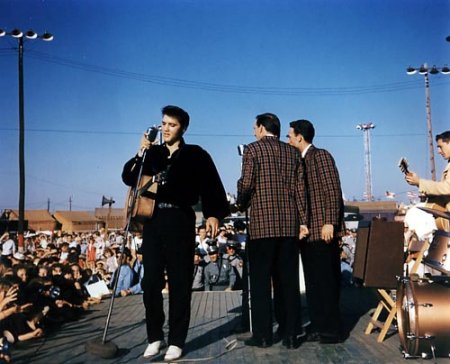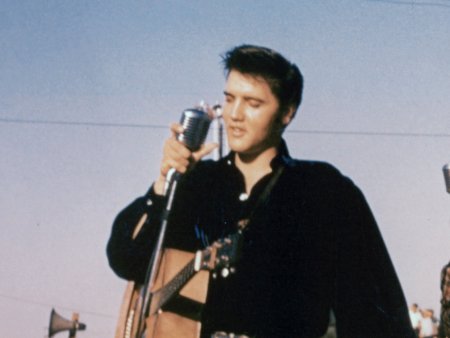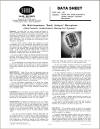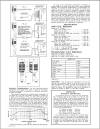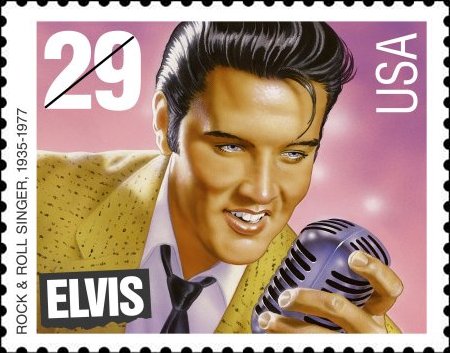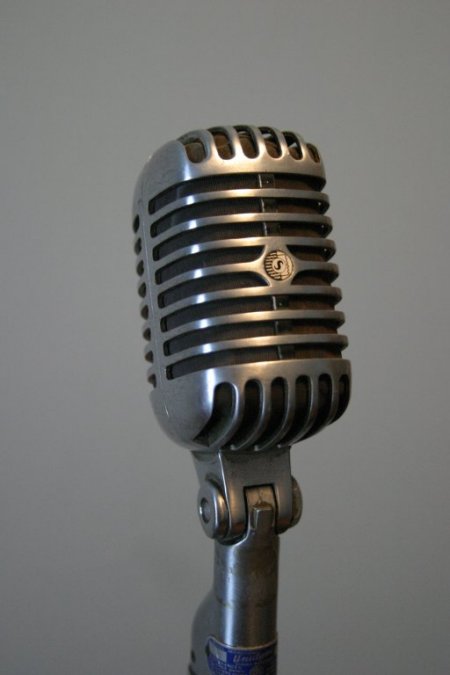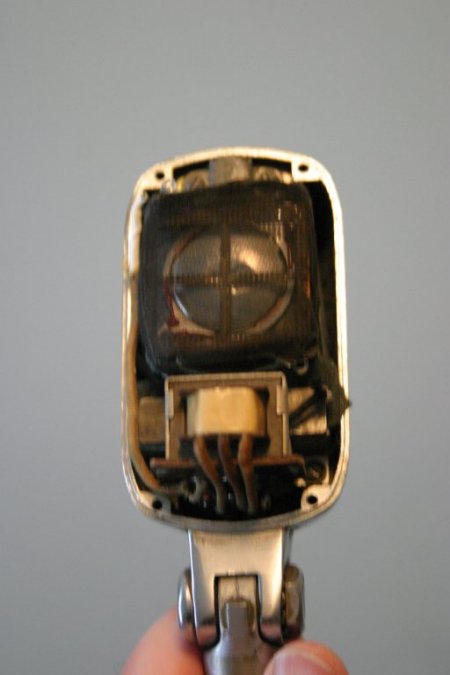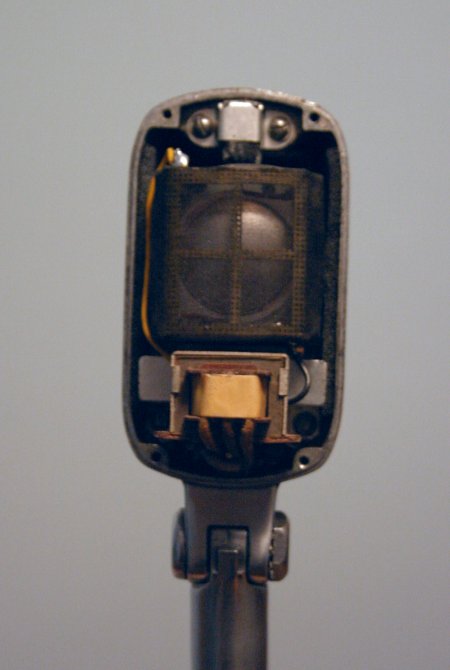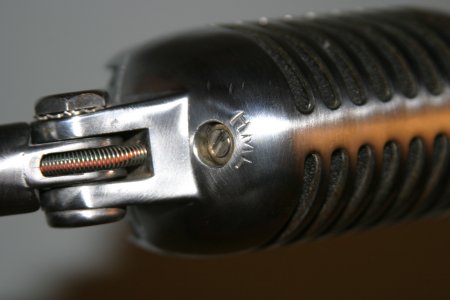 |
The Shure 55S
Throughout his performing career Elvis sang through a multitude of different types of microphones and, at least while touring in the 1950s, was dependent on the venue to provide the PA system (see the venues section). Prior to Bill getting an amp, Scotty has said that when they would arrive at a venue they would hope that there would be an additional microphone to amplify Bill's bass, and that in some instances Elvis would have to sing through the second input on Scotty's amp (though its never been stated whether they traveled with a mic of their own).
No doubt through the popularity of a number of select and widely distributed photographs, there is one microphone in particular that through the years he has been "unofficially" associated with and it has been quite often referred to by "the uninformed" as "the Elvis mic."
That microphone is a Shure Unidyne 55S. It's not surprising though, with its polished chrome look and its futuristic, for the time, stylized design, it is one of the most readily identifiable microphones from an era that saw the birth of a new form of music, one whose fans would dub Elvis 'the king' of.
The Shure Brothers got their start in the mid 1920s in Chicago selling radio parts kits and by 1931 started developing their own microphones. They introduced the Unidyne 55 in 1939 which, according to Shure, was the first single-element unidirectional microphone. The single-element design made microphones smaller, less expensive, and, therefore, more accessible to all. Sam Phillips used a Shure 556 Unidyne, among other mics, to record at Sun. In 1951 Shure introduced a smaller version of the renowned 55 called the Unidyne 55S (and 55SW, a version with an on/off switch).1
Elvis' "presumed" association with that particular model, if it hadn't been already, was likely sealed for all time in January of 1993 when the U.S. Postal Service honored him with a commemorative stamp and for the artwork chose a '50s era representation with an interpretation of a microphone like the Shure models.
According to the Post Office, as of 2006, the 1993 Elvis stamp continued to hold court as the most popular stamp of all time with more than 124 million collected. Although the Shure company no longer makes or services this model, the do offer a Series II. Though it looks like the old one in appearance, it is in reality a contemporary design with modern elements. The parts are not interchangeable with the old ones. Because of their abundance and popularity at the time, there are a number of them out there that can still be found.
I've had one for several years that I bought for $15 at a vintage guitar show in Nashville when I was in town for Scotty's 50th year with Gibson celebration party. Until recently, it was not working and only of ornamental value. I contacted Christopher Curry of Mutant Mics, who repairs and reconditions antique mics and can even upgrade ("hot rod") them with lights and modern elements such as Shure SM58's, Beta 58's and 87 Beta's. He specializes in the Shure 55 series.
Chris told me he had a used dynamic single coil cartridge, "cart" for short, in super shape for the inside to bring it back to new again and would include a refurb: cleaning inside and polishing the outside, new wires if needed, all new solder joints, and a new connector if the one in there was in bad shape.
Ultimately, this mic required replacement of a few things other than the cart... a couple of wires and the connector in the handle (it's screw hole was stripped.). He also put a new spring in it since the old one was corroded into the hole and wouldn't come out.
He also added a new foam screen since the old screen/silk was in worse shape than thought, so it will still look original and have a slightly better sound. The originals came in either red, blue and black, I chose black. Unfortunately time didn't permit Chris to photograph the work done on mine to display here but he did have the process documented from a previous similar repair.
The cord on mine is a vintage one with a 1/4" phono plug on the end. It connects two of the wires together and adds gain above normal... more chance for feedback... also the M and L part of the HML switch to vary impedance (high, medium and low) will not work.
To make that functional you need to have a cord with a vintage connector on one end and a contemporary XLR on the other. This will make the HML impedance switch work properly and be easier to handle feedback.
James V. Roy 1 according to "The History of Shure Incorporated" Special thanks to Christopher Curry of Mutant Mics for the fine work he did on this mic and his assistance with this page. Please note that "Elvis" is a registered trademark of EPE, Inc. and has no affiliation with Shure Inc. or its microphones, nor do we.
|
| All photos on this site (that we didn't borrow) unless otherwise indicated are the property of either Scotty Moore or James V. Roy and unauthorized use or reproduction is prohibited. |

